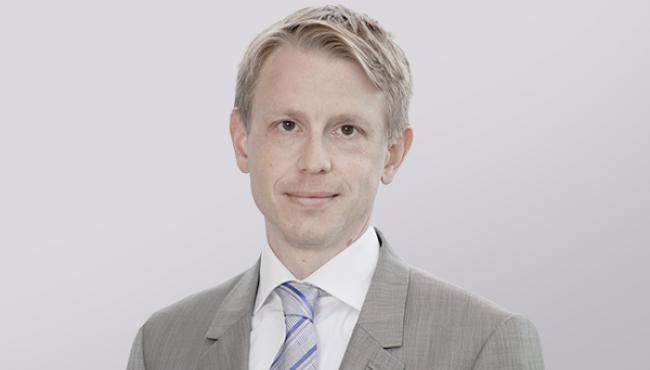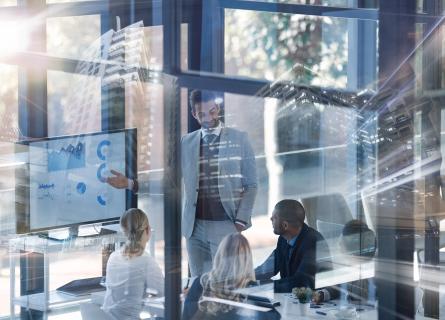
Foresight and innovation: On the mechanics of disruptive technology
An idea is like a virus, resilient, highly contagious.
The smallest seed of an idea can grow.
It can grow to define or destroy you.
- Cobb in “Inception”
As – for the majority of us – the innovative power of ideas is normally too abstract to understand, innovations sometimes seem to come as a sudden surprise to us, be it in behaviour or in products. While for Cobb (Leonardo Di Caprio), the inspiring words from the irresistible Hollywood motion picture “Inception” make sense for the plot, they do mislead us a bit when it comes to innovation. The “new normal” in our days has illustrated that a virus can in fact be much more disruptive than an idea.
In terms of ecological change, COVID-19 has had much more impact than all our ideas and approaches that were supposed to speed this change up. But these words still do make a lot of sense, for innovations do not look for ways, they create them – just like a virus. And those who do not or cannot change, no matter if on-screen in the movies or off-screen in real life, will eventually lose the freedom to change in a self-determined way. But do these disruptive events really emerge overnight?
To be or not to be
To give an answer, let us take a step back: “As we may think” – the famous essay of US engineer Vannevar Bush – inspired Ted Nelson and Douglas C. Engelbart in the 1960s and 70s to develop the hypertext and the user interface as well as the human-machine interaction with the personal computer, innovations that fundamentally changed the world we live in today. But Bush’s ideas went back to the late 1930s. And he wrote his essay in 1945.
In the 1980s, video seemed to have killed the radio star all of a sudden (as the famous disco song deplored), as did iTunes and Napster with the compact disc a few years later. But in fact, all these ideas usually grow gradually, they do not pop up overnight. And beyond that, there is usually more than just one protagonist that causes the disruption. To develop its full potential, an innovation needs some supporting actors, an equally powerful and disruptive set of technologies or a platform. And even strategy has to play a certain role.
Think e.g. of the iPhone. There already were touchscreens in the 1990s and mobile phones were “Connecting People”, as the slogan went at Nokia, which dominated the segment for more than a decade. But the combination of a touchscreen, a cutting-edge operating system, gesture control and the iTunes shop made the iPhone a game changer paving the way for the mobile internet, photography, gaming etc.
Even today, some might be overwhelmed when they read about Open AI’s GPT3 writing poetry, recently even an article in The Guardian, about GPT3 coding apps and programmes as well as designing user interfaces on demand. But remember, almost three years ago, an algorithm called AlphaGo Zero, developed by a certain company called Google, managed to learn the world’s most complex board game, Go, on its own in less than a day and to beat the world’s best players after less than a month. While all this is fairly recent, the development of artificial intelligence already goes back to the 1980s. This also applies to immersive technologies normally referring to Augmented Reality or Virtual Reality, to the IoT and Blockchain: It is just that most people do not have it on their radar (if they have got a radar at all).
This is where AFRY’s expertise and its revolutionary Foresight concept comes in. Foresight means that our management consultants with their huge professional expertise are able to combine our industry insights and data with cutting-edge technologies like the “Futures Platform“ to create a strong and broad radar, on the basis of which they can then elaborate credible scenarios that categorise trends and phenomena and their likely effects on any specific industry.
We work daily with globally leading organisations that apply novel methods of foresight, horizon scanning and scenario work as an integral part of their strategy, as well their everyday operations. During the last 12 months, there has been a strong signal from these organisations to build continuously adapting and automated AI-based foresight systems and solutions. These organisations realise that information related to technologies of the future is vast, and that it should cover all domains, industries and ecosystems, and also be easy to convey and work with. At the same time, things are moving fast, leaving less time to spend on developing foresight, planning and strategies. One way to overcome this situation is through applying the right technology and tool set, with a sufficient and well-targeted leadership and lots of facilitation work.
- Saku Koskinen, Foresight Expert and Partner at Futures Platform
Predicting future trends is what we do here at AFRY Management Consulting. We have done hundreds of industry analyses for the bioindustry and collected a vast amount of data. By combining data and examining external trends, we can provide accurate and useful results to our clients.
- Tomi Amberla, Senior Principal, Head of Biorefining Practice at AFRY Management Consulting






